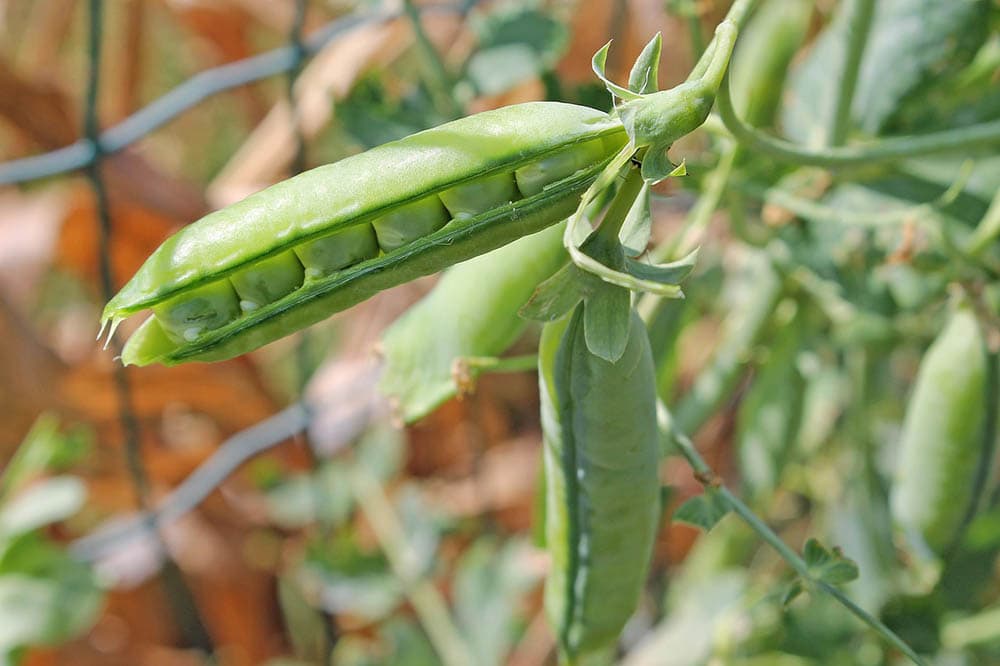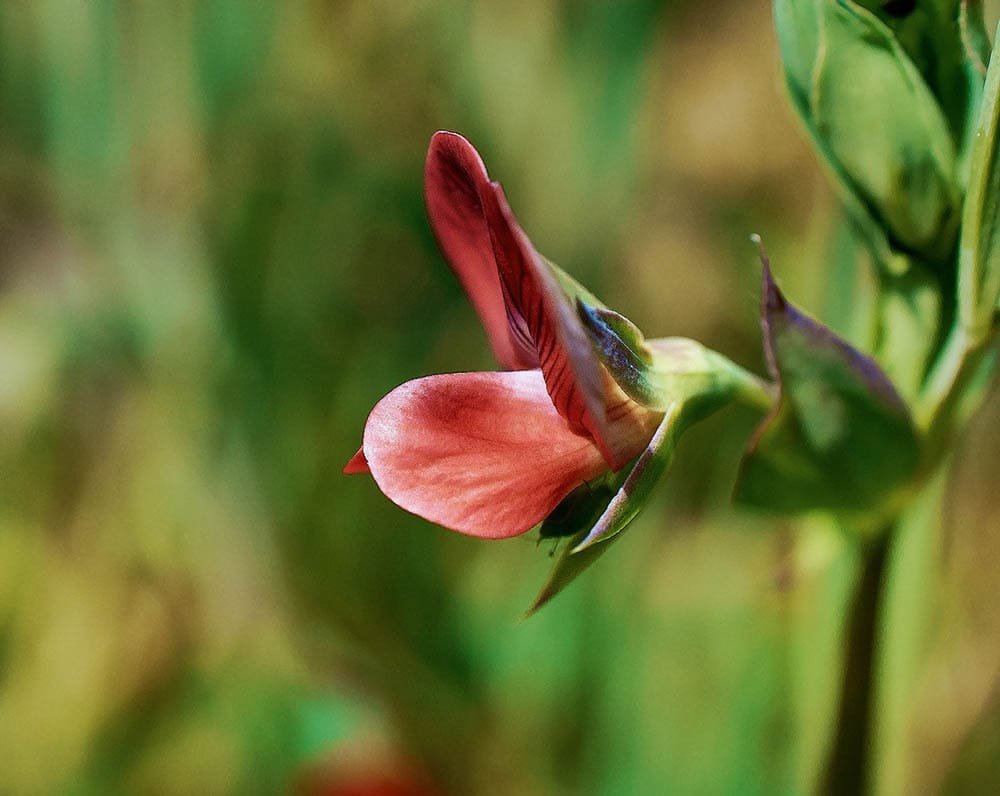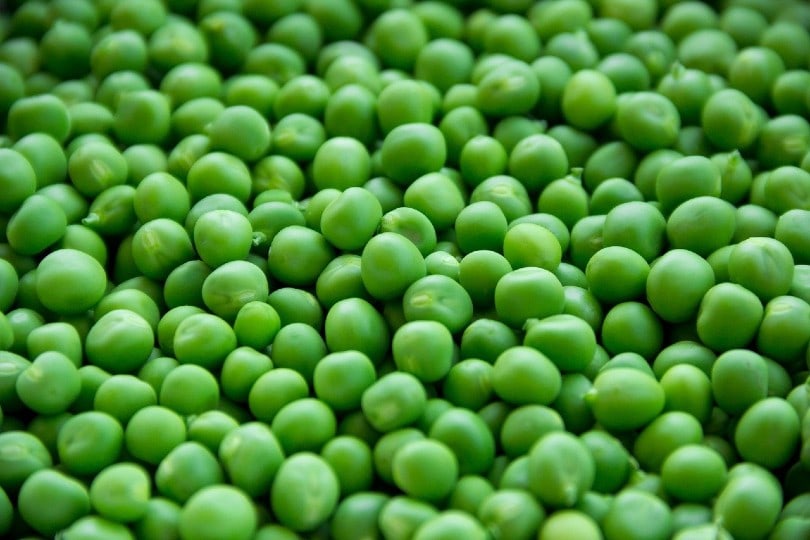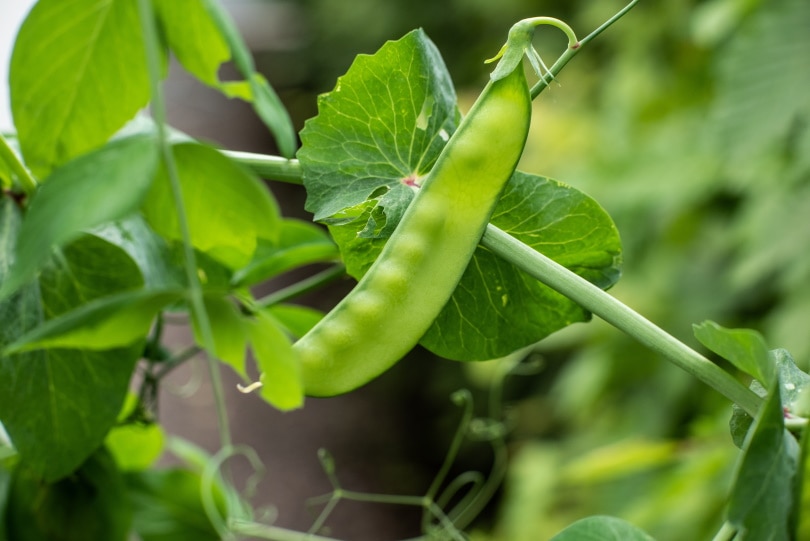How & When to Plant Peas: Tips, Tricks, & FAQ
-
- Last updated:

Sweet, protein-rich, and healthy both for kids and adults, pears are in a league of their own. They are quite tough, too, and not that hard to grow. Regardless of whether you’re an amateur or a seasoned vet, this lovely legume will definitely be a welcome addition to your garden. Perfect for salads, fancy meals, and your wildest culinary experiments, peas are a must-have in any kitchen.
And in this guide, we’ll cover every single step of planting peas—the hows, the whens, and the whys. While they are, indeed, relatively easy to cultivate, there are still a lot of things to keep in mind before planting. So, without further ado, let’s get right to it and grow our beautiful pea vines!

What’s the Right Time for Planting Peas?
Peas mature very quickly and germinate in 1–2 weeks in the right conditions. And they don’t need you to babysit them 24/7 to ensure a proper harvest. So, do you plant them in early summer? Or maybe late spring will be a better choice? In contrast to many plants, peas prefer cool weather over a subtropical climate. Thus, the early days of spring will be perfect for planting the seeds.
See that the soil temperature isn’t lower than 45 degrees F and sow the seeds 1–1.5 months before the last spring frost date. Do you live in an area with mild winters? Then consider planting some extra seeds in mid-August, 6–8 weeks before the first autumn frost, to get a second harvest.
Regardless of the season, don’t grow peas in pots indoors and move them outdoors, as the roots might not survive that. And one more thing: while peas will grow at 45ºF, they will germinate slowly. For steady growth, make sure the temps are in the 55–75º range (but never higher than 85º).
| Botanical Name | Pisum sativum |
| Soil Type | Well-drained, loamy, sandy, clay, organically rich |
| Soil PH | 6.0–7.5 (slightly acidic) |
| Sun Exposure | Full sun/partial shade |
| Watering Requirements | Moderate (1–2 inches a week) |
| Temperature | 55–75º Fahrenheit |
| Hardiness Zone | 2–11 USDA |
| Days to harvest | 60–70 days from planting |
Which Peas Should You Grow?
- Garden peas. More commonly known as the English peas, they grow rather quickly. The pods are not edible, but the peas are quite delicious. The sweet flavor makes them a perfect side dish. The bright green color, in turn, looks great on any table. Don’t forget to shuck them before eating.
- Snap peas. In contrast to the previous species, the pods of snap peas are very much edible. The peas are a bit smaller but still big enough; plus, they’re nice and thick. If you love eating legumes raw, the snap peas will be an excellent treat to go with the main dish.
- Snow peas. These legumes grow inside of flat, thin, and long consumable pods. The peas are rather small. And they’re mostly used in Chinese cuisine. Why does this variety have the prefix, though? Does that mean it’s more frost-resistant? Well, not quite: the planting season is the same.

The 8 Tips on How to Plant Peas
1. Start by Sowing the Seeds
If you’ve already decided which pea species you want to grow, go ahead and put the seeds into the ground. But before you do that, here’s a pro tip: keep the seeds in warm water for 8–10 hours. And right before you plant them, cover every single seed in soil inoculants. That will provide a strong nitrogen boost and ensure rapid growth. Meanwhile, the soil temperature should be 60–65 degrees.
Otherwise, the seeds will rot, and you won’t see any vines, flowers, pods, or peas. But wait—what about the spacing and depth? Plant pea seeds at least one inch deep into the soil. As for the distance in the rows, 2–3 inches should be enough to give each plant enough space to flourish. Make sure the rows are at least 18–20 inches apart, though!
2. The Soil: Fertilized or Not?
What does the perfect soil for growing peas look like? First, it needs to be well-drained yet moist. Next, see that it’s sandy and loamy. Organic matter also plays a key role here. Adding a healthy amount will not only protect the seeds from infections and pests but also help them flourish into bigger, stronger plants. As for acidity, aim for a pH of 6.5–7.5.
3. Compost the Soil to Stimulate Growth
Don’t underestimate the power of premium-quality mulch! But don’t apply it right away. Give the plants some time to grow (up to 5–6-inches tall) and only then add a generous amount of compost. And by “generous”, we mean a layer that’s 1–2-inches thick. When spread over the soil, compost does an excellent job of conserving the moisture and preventing weed growth.
4. Make Sure There’s Enough Sun
Just like most plants, peas benefit from full exposure to the sun. We’re talking about 5–8 hours of direct sunlight during the day. However, peas are quite tough and can survive not only lower-than-average temperatures but also thrive in partial shade. Thus, even if you live somewhere up north with a cold climate and very little sun, you might still be able to grow peas.
The results won’t be the same, of course, but you will get plenty of legumes at the end of the harvesting season.

5. How Much Water Do Peas Like?
The soil should be watered regularly so that the seeds/seedlings are always growing in a moist environment. In dry conditions (during the hot summer days, or if you live in a generally dry area), water the peas more often. With that said, avoid waterlogging, as it can make the roots rot and, eventually, kill the peas. Also, water the soil, not the vines. Just like with most vegetables and fruits, pea plants don’t like high levels of moisture.
6. Common Diseases and Pests
Fusarium wilt is a very common disease among pea plants. It makes most of the leaves at the bottom turn yellow and prevents steady growth. How do you stop it? Crop rotation has proven to be an efficient remedy as it breaks the natural cycles of pests, weeds, and plant diseases. Do that every season, and you should be able to fight this infection off. Powdery mildew is another common disease.
But if you use drip irrigation and keep the foliage dry, it won’t be able to damage the crops. Aphids—tiny sap-sucking insects—can also cause lots of trouble. To keep them at bay, use insecticidal soap. Rich in potassium salts, it will curb the infestation of a long list of pests and insects. And if that’s not helping, plant Basil or Rosemary right next to the peas’ vines. The strong scent is known to scare aphids away.
7. Building a Trellis/Raised Bed
All three pea types that we listed earlier (garden/English, snap, and snow) are climbing vines. And with a trellis, you’ll be able to accomplish two goals at once. First, you’ll protect the plants from most pests, critters, and diseases. Second, they’ll get more sun and air circulation vs. growing horizontally. Pea vines are very light. So, the trellis doesn’t have to be built from iron or anything like that.
You will need to guide the vines (or, rather, the seedlings) at first, of course, until the tendrils grab onto the mesh. Don’t want to commit to building a trellis? Then consider using a raised garden bed. The best thing about these beds is that they warm up much quicker than the soil; plus, they ensure better drainage, which is also vital for successfully growing peas in a backyard garden.
8. Harvesting the Peas
Peas won’t keep you waiting for long: the average harvesting time is 60–70 days. This applies to all three types, by the way. Don’t use a knife when harvesting peas! Instead, grab the vine with one hand and gently pull off the pods one by one with the second hand. Next, let them rest in a bucket full of cold water for a while before drying. When not frozen, peas usually last for 6–7 days.
Garden peas should be harvested when the pods get big and round. Throw the pods away and shell the peas. With snap peas, the pods should be inflated yet still soft to the touch. Do you see string-like fibers on the peas? Make sure to remove them before cooking/eating. The same is true for snow peas. But with this variety, only pick the pods when they’re mature and you can barely distinguish the peas inside.


Are Peas Vegetable, Fruit, or Something Else?
You might think that peas are vegetables, but they’re not, even though we do use them like veggies in our meals. Scientifically speaking, they are fruit, because they grow in pods of a plant called Pisum sativum. Those pods, in turn, have seeds and develop from flowers. The actual peas are rather small, and you’ll find dozens of those in a single pod. That makes them a part of the legume family, just like peanuts and beans.
A Truly Universal Ingredient
Salads, stews, soups—peas are a welcome guest in almost any cuisine that you can think of. Now, if you want to cook the peas and still get as many nutrients as possible, steaming is your best option. Oh, and you won’t have to eat every single pea during the warm season. Peas are one of those foods that can be frozen and kept in the fridge for months, if not years.
That’s right: you’ll be able to enjoy them even on the coldest days of winter! But what about calories, though? Don’t worry—there are only 81 calories in 100 grams of peas (118 calories in one cup). Eating 100–200 grams of peas will make you feel full, while the high levels of fiber can help the digestive system. As long as you eat a half-cup serving a day, you’ll get a mighty dose of health benefits. Let’s talk about them next.
Healthy and Nutritious
Although peas are as tiny as they come, these bead-sized legumes are quite nutritious and healthy. Originally from the Middle East and Asia, today, peas are cultivated in most countries across the globe. So, what’s so special about these “little green guys”? They’re very rich in antioxidants, minerals, and vitamins—elements that strengthen the immune system and prevent a wide range of diseases.
Peas come packed with vitamins A, B, C, and E, along with nutrients like zinc, catechin, and coumestrol. You’ll have a lower chance of getting stomach cancer, chronic eye diseases, arthritis, diabetes, and various heart diseases if you include peas in your diet. However, if you have a legume allergy, exclude peas from your diet. And, as a general rule, don’t eat too many peas even if you’re not allergic, as that can cause bloating.

Can I Feed Peas to My Pets?
Yes, fresh, frozen, and even thawed peas can be a healthy and tasty snack both for a cat and a dog. They aren’t toxic or poisonous. But we strongly recommend against feeding pets canned peas. That’s because they’re rich in sodium which can be hazardous to their health. More importantly, don’t let your pet eat the pods, as they can cause choking. The key here is to keep pea consumption to a minimum.
Think of them as a treat, not something a dog/cat should eat every single day. This way, peas will be an excellent way of diversifying the pet’s daily ration and keeping them on their toes for the next meal. If you don’t follow this rule, you’ll run the risk of causing side effects like vomiting and diarrhea. Last but not least, don’t feed peas to dogs that have kidney problems as that will only make matters worse.

Conclusion
It doesn’t really matter what kind of a meal you’re cooking: peas will always be a great ingredient! They can not only add a lovely flavor to your food but also help fight off various diseases. Now, you probably think that it takes a lot of work, expertise, and gardening know-how to grow peas in a backyard garden. Well, yes, it will take some effort, that’s for sure.
But it won’t be something the average gardener can’t handle. The most important thing when working with these legumes is planning. If you have no problem with following a set of rules, you’ll be very successful at growing peas! So, use all the info that we covered today as your guide, take it slow, and get to planting!
- WebMD – Health Benefits of Peas
- BBCGoodFood – Top 5 health benefits of peas
- UNL – Allergenic Foods and their Allergens
- What are the health benefits of peas?
- AKC – Can Dogs Eat Peas?
- Can Cats Eat Peas? Are Peas Safe For Cats?
- Benefits of Peas in Pet Food
- Wikipedia – Pea
- Wikipedia – Microbial inoculant
- USDA – Crop Rotation
- How to Grow and Harvest Peas in Your Home Garden
- INSECTICIDAL SOAPS FOR GARDEN PEST CONTROL
- Edu – Growing peas in home gardens
- Peas Growing Guide
Featured Image Credit: CJ, Pixabay
Contents

